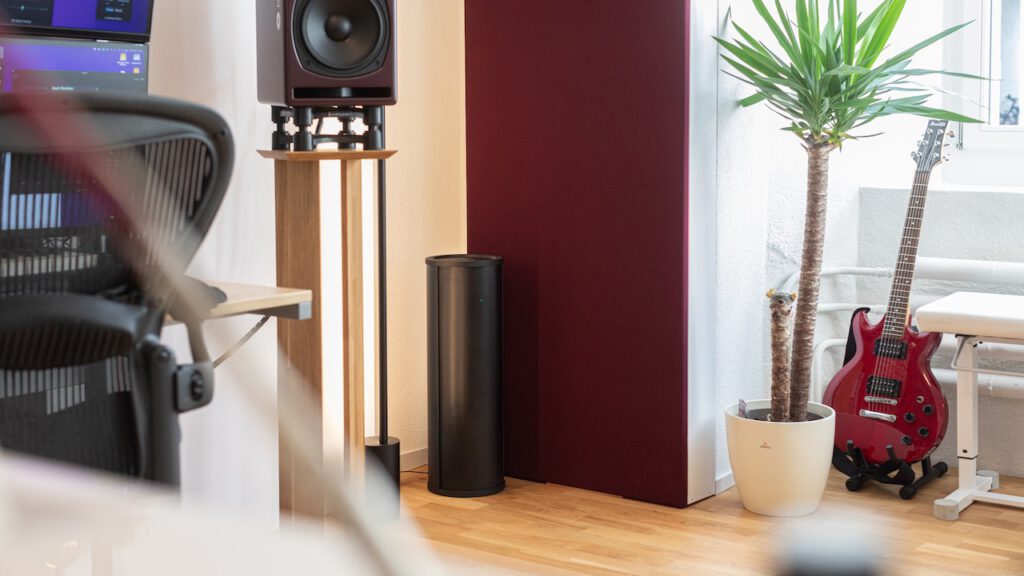PSI Audio continues to turn heads with its AVAA technology. The new active bass trap AVAA C214 expands the AVAA family by a now digitally controlled variant of the original C20. The C214 is more compact and can be adjusted in its sensitivity through a remote app. It can be placed on the floor or mounted to walls or ceilings, depending on where it operates optimally. The innovative technology eliminates room modes, acting like a black hole that hoovers up resonant modal frequencies before they are bounced back. As it does not use anti-sound, the acoustic impression is changed for the better in the entire room, not just a small sweet spot.
C214 – new device, established efficiency
For PSI Audio, the AVAA C214 is an entirely new kind of product. For the first time in the company’s history, it features a DSP chip! The engineers at the company’s manufacture have found a way to realize the AVAA principle with a DSP, overcoming the challenge of reaching a latency below 0.2 milliseconds. The digital technology makes AVAA more flexible by virtue of its app that allows to adjust the device’s sensitivity, and can switch it on and off either individually or in groups. While mainly aimed at audiophiles and home users, this feature may come in handy in studios as well, if the engineers would like to tailor the room response to the sound being produced.
Room modes eliminated: AVAA
The basic principle of the PSI Audio AVAA C214 remains the same: it eliminates room modes caused by the rigid surfaces. These individual resonances of a room are one of the biggest challenges in acoustic design, and the AVAA makes it quite easy to tackle. While passive absorbers require a lot of material (we are talking metres thick!) or resonant absorbers need to be tuned to a specific frequency, the AVAA simply eliminates resonant frequencies between 15 and 160 Hz as effectively as a passive absorber 45 times its size. It does not affect the direct sound from the speakers, as room correction devices do, and it does not work with anti-sound, so the room modes are eliminated for the whole room, not just the sweet spot. The result is a clearer, more precise sound image – no one does precision quite like the Swiss.
The acoustic black hole – available in white
Essentially, the PSI Audio AVAA C214 imposes an acoustic impedance in front of the device – or, put simply, it acts like a hole in the wall. Instead of being bounced back, the respective sound waves disappear, they are sucked in by the C214. This acoustic black hole is now even more compact and easy to install, with wall brackets to place it wherever required in the room. Its maximum acoustic impact is complemented by its minimum visual impact, as it is available in black or white, allowing it to do its thing as covertly as possible.





